Luminare: New Survey Questions Database Makes for Quick and Easy Searching

This blog post is part of Luminare, our blog series exploring innovative solutions to data collection, quality assurance, biomarker measurement, data use, and further analysis.
Since 1984, The DHS Program has conducted 400+ surveys in 90+ countries. That is a lot of surveys and a lot of data! In the past, if a DHS Program data user wanted to reference a particular survey question, they would have to search the questionnaire in the back of the survey Final Report of interest . If the data user wanted to compare how a question was worded across several surveys, they had to search through every Final Report they wanted to compare.
Not anymore! The DHS Program has created a Survey Questions Database to help data users access survey questions quickly and easily. The publicly available database will contain every question and response option included in all Demographic and Health Surveys (DHS) and Malaria Indicator Surveys (MIS) to allow users to search for topics of interest and easily compare question wording across surveys and over time. Currently, this beta version of the Survey Questions Database only includes MIS questionnaires in English for Anglophone countries and does not include any local languages. Future versions of the database will include additional surveys and languages.
On the first page of the Survey Questions Database, a disclosure statement lets users know that the questions shown in the database are extracted from the original survey questionnaire files. The database does not include information on who was asked the questions, since skip patterns or filters were not included. To understand the flow of questions, it is essential to review the original questionnaires, found in the survey Final Reports on The DHS Program’s publications page.

After reading the disclosure, a keyword search will appear. Users can choose the type of keyword search to perform, whether results must include this exact phrase or word or may include any of these words. Users can also filter search results by Year or Country.
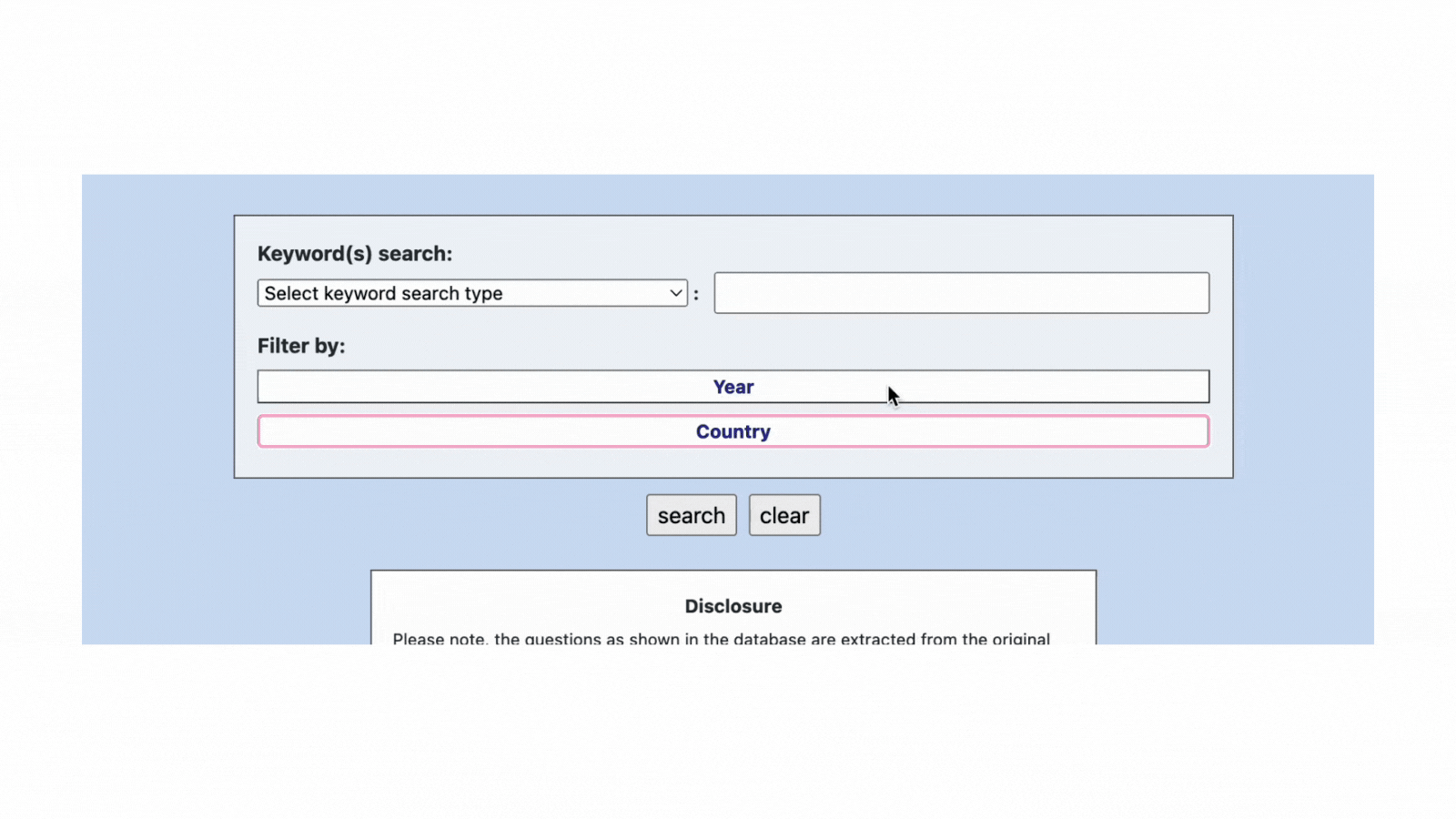
Let’s explore an example. A researcher is interested in examining alternative uses of mosquito nets. Specifically, they are interested in whether any survey has collected data on mosquito nets being used for fishing. How would they go about finding out whether any MIS surveys asked this question?
One way is to search for the term “fishing.”

This reveals that 5 MIS surveys have questions with the word “fishing” included.
Let’s examine the first result in more detail. This shows that Question 128C in the Household Questionnaire of the 2015 Kenya MIS used the term “fishing.” You can see the word “fishing” is in bold under “Question Text.” To learn more about the 2015 Kenya MIS, click the hyperlink under “Survey” to go to the 2015 Kenya MIS Survey Summary Page. To explore the question in the questionnaire, click on the hyperlink under “Questionnaire” to go to the beginning of the Household Questionnaire in the Final Report PDF.
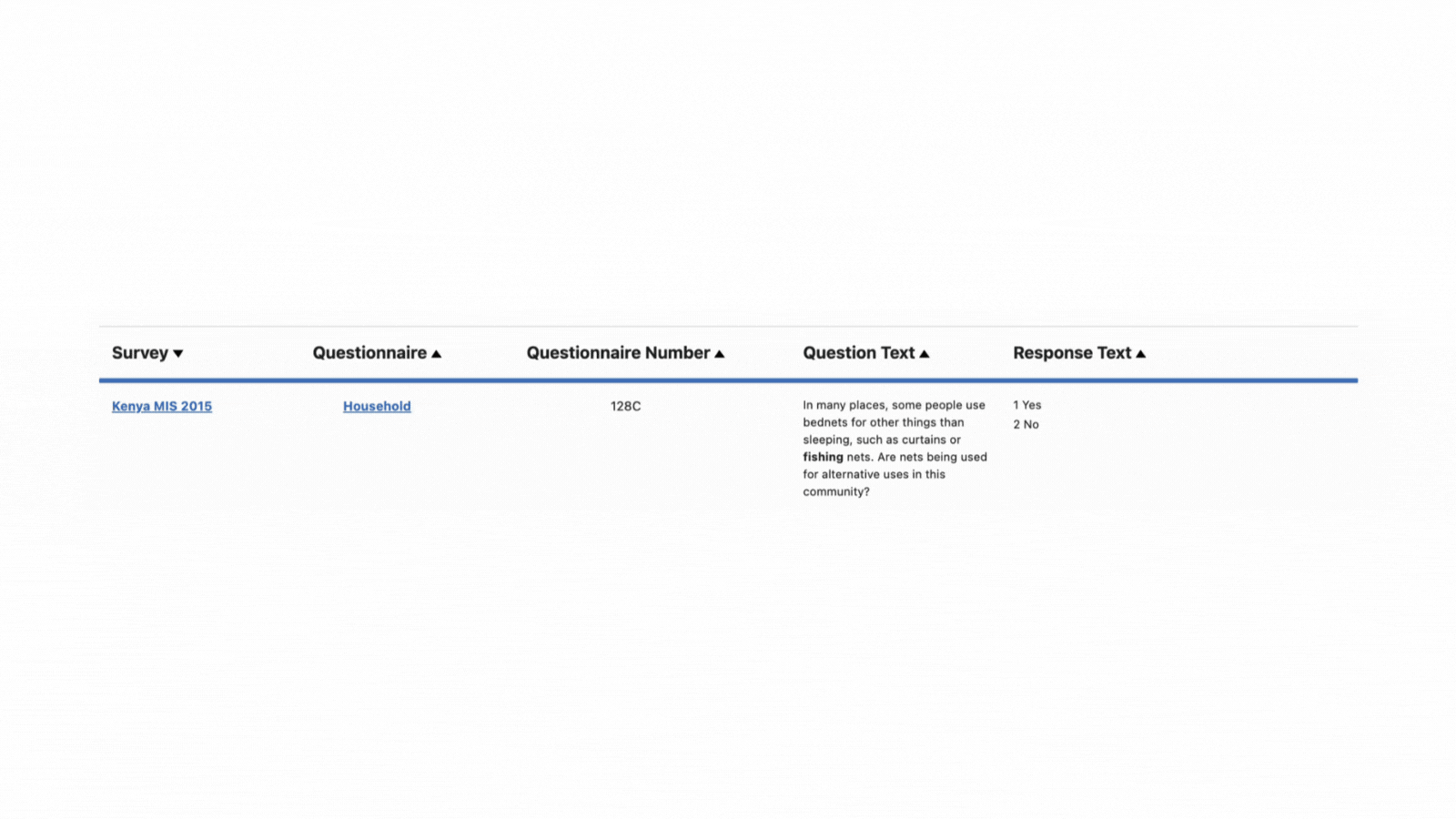
As stated in the disclosure statement on the first page of the database, it is important to always check the questionnaire skip patterns and filters to see who was asked the specific question. Looking at the Household Questionnaire for the 2015 Kenya MIS, we see that Q128C is asked to the household questionnaire respondent regardless of whether the household owns a mosquito net.

There are other features users can take advantage of in the Survey Questions Database to help display search results. These include arrows found at the top of the column headings to sort the columns.
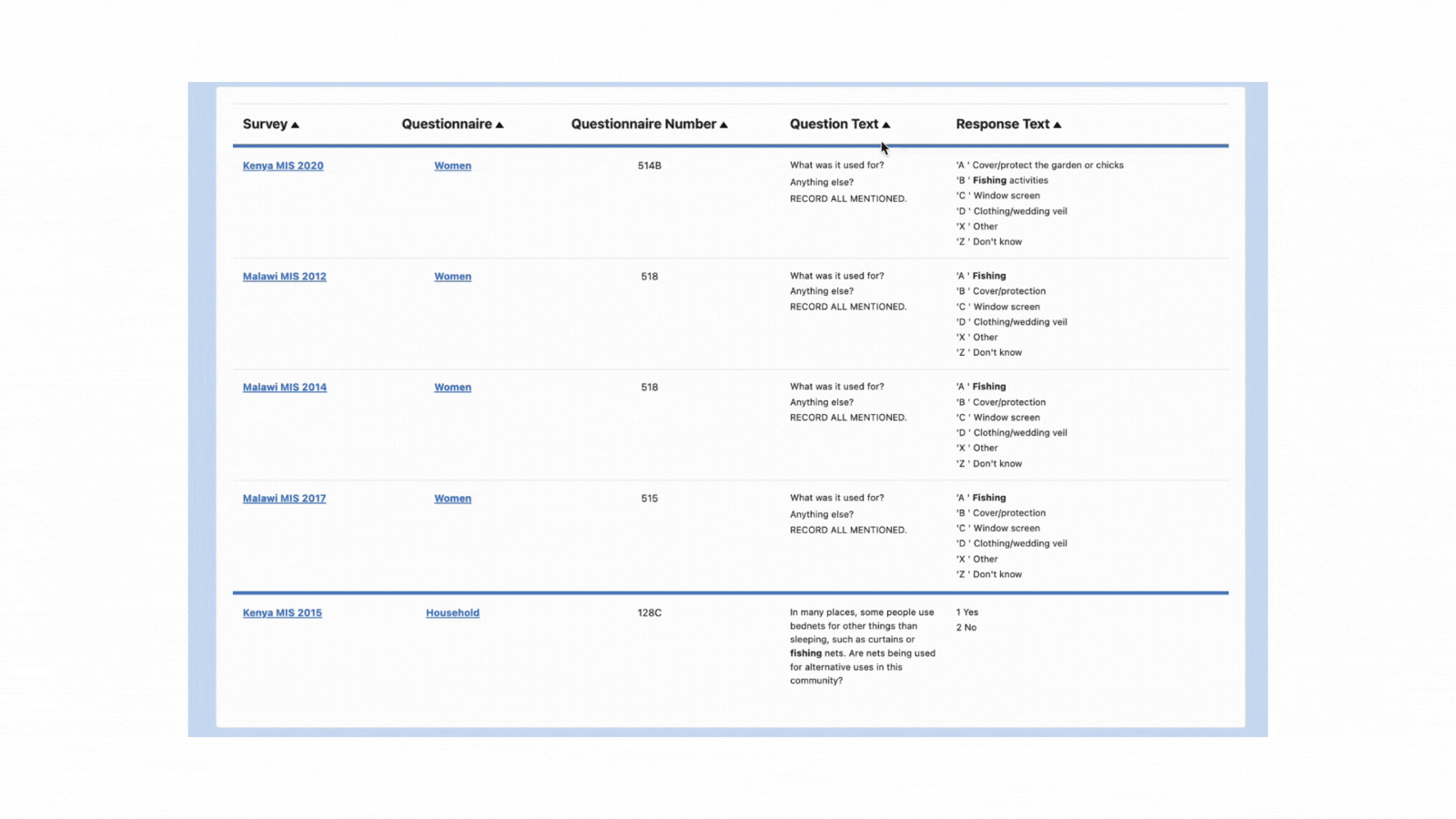
At the top and bottom of the list of results, users will find a button to export search results to Excel.
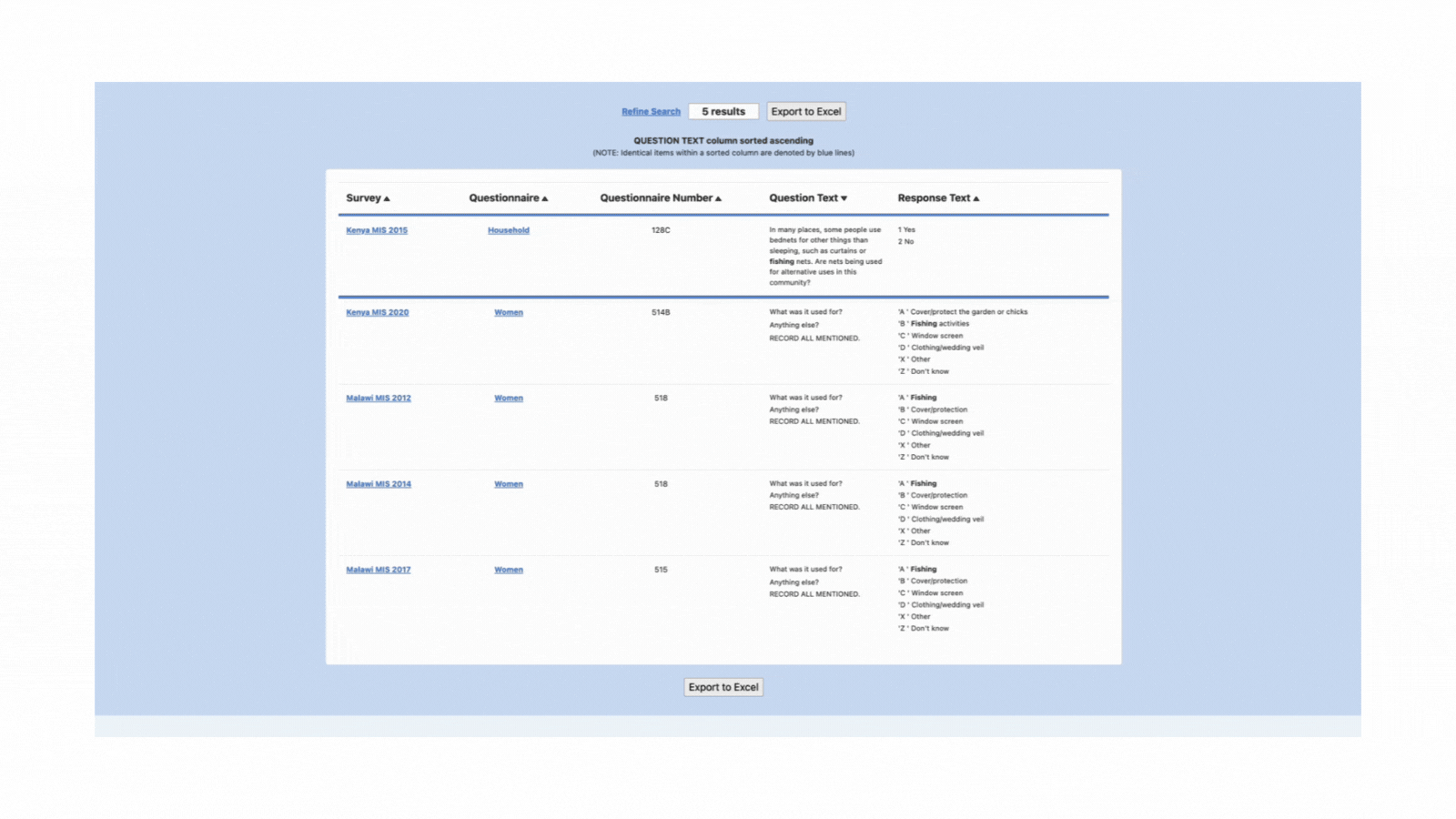
Check out the Survey Questions Database with your own research question.
If you have any questions or comments regarding the Survey Questions Database, please email: : questiondatabase@dhsprogram.com.
Featured image © Mykyta/Adobe Stock


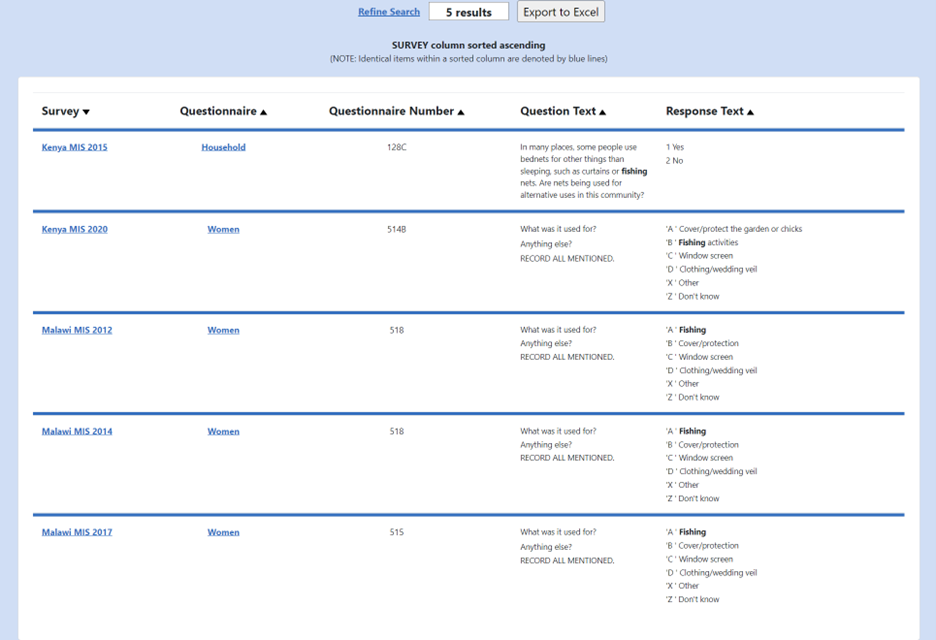
Great!